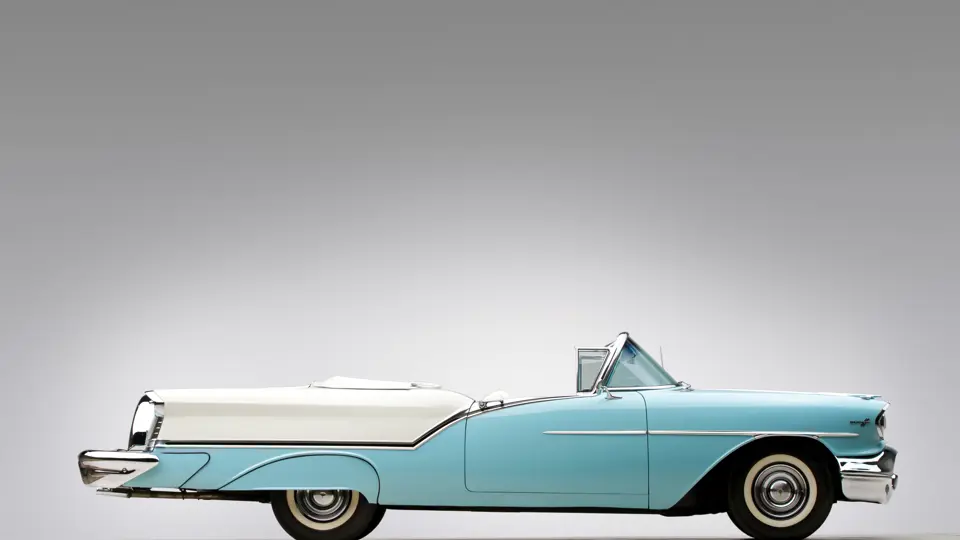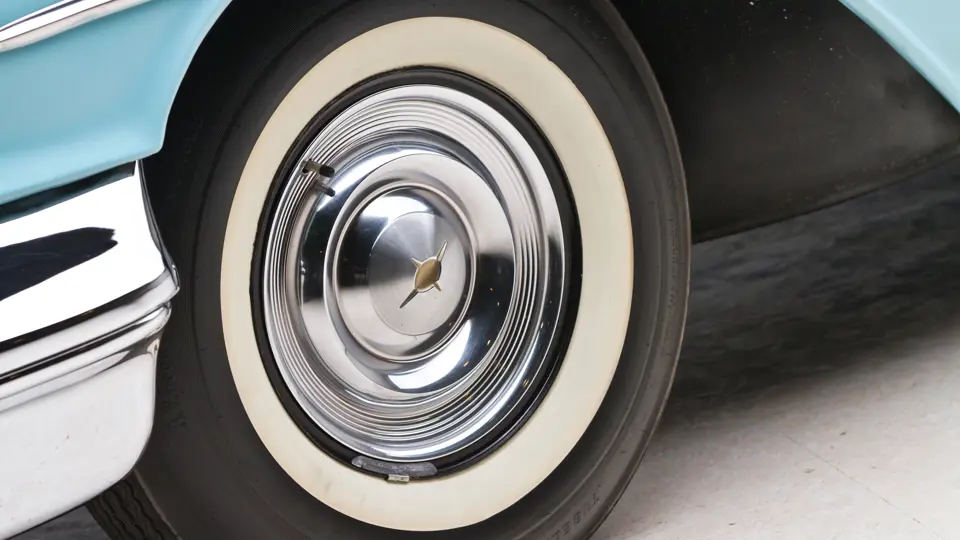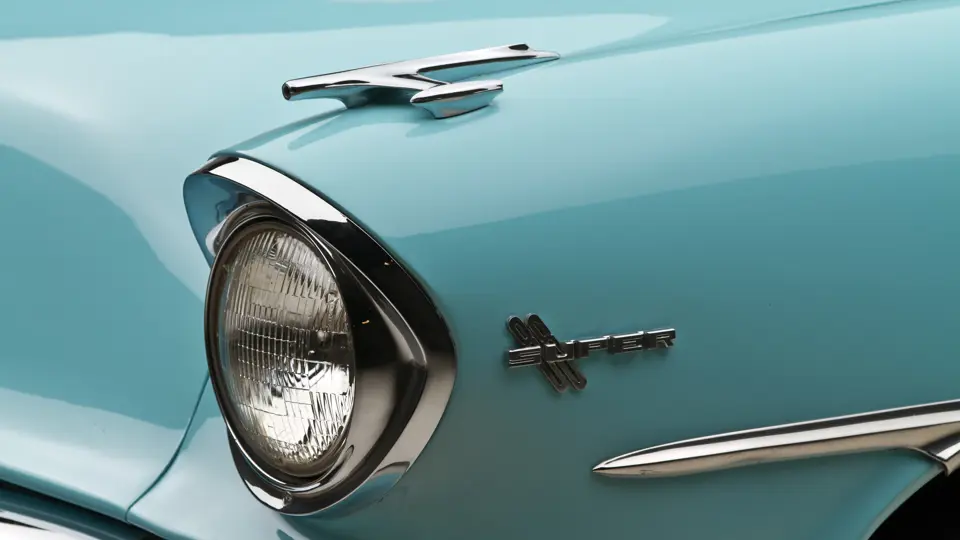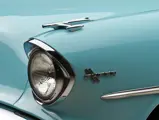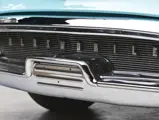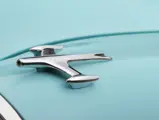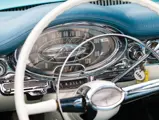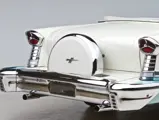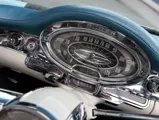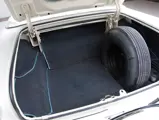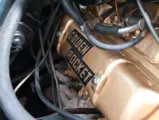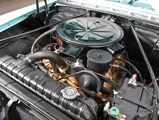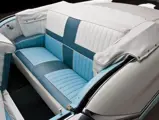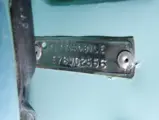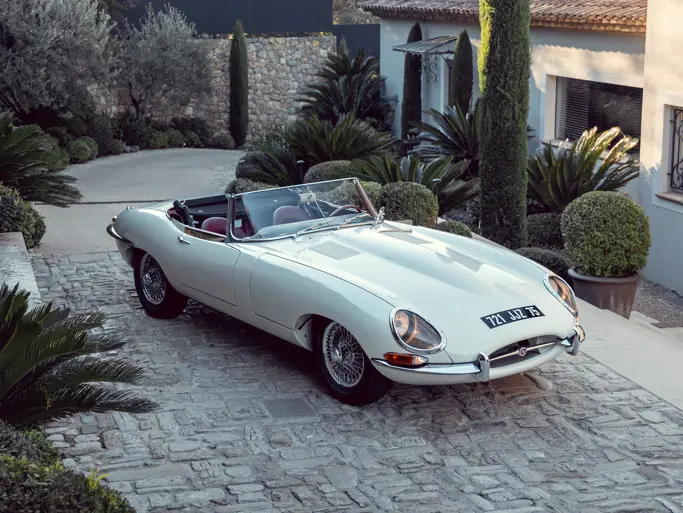Sought-after J-2 triple-carburetor engine
312 bhp, 371.1 cu. in. OHV V-8 engine, four-speed Hydra-Matic transmission, coil spring independent front suspension, live rear axle with semi-elliptic leaf springs, and four-wheel hydraulic drum brakes. Wheelbase: 122.0 in.
Oldsmobile’s overhead-valve, high-compression Rocket V-8 found instant favor with enthusiasts, right from its 1949 introduction. The racing community noticed it, too. Its smooth and consistent torque made it adaptable to many axle ratios, and it became a favorite in NASCAR circles. In 1949, Oldsmobiles won six out of nine Grand National events, and principal drivers, Robert “Red” Baron and Bob Flock, finished first and second, respectively, in season points.
In 1950, Olds was triumphant all over the south, winning 10 of 19 Grand Nationals, while Joe Littlejohn set a new two-way record for the measured mile at Daytona in an 88 Club Sedan. The year 1952 was just as good: 20 out of 41 Grand Nationals, with Bob Flock and his brothers Tim and Fonty taking most of the honors.
That strong run ended in 1952, when the new Twin H-Power Hudson Hornets took to the ovals. Olds still enjoyed a few moments of glory, such as Bill Blair’s trouncing the opposition in the Atlanta 500 and Fonty Flock’s win at Occoneechee, North Carolina. But overall, the season was a bummer.
The factory took notice. The result was the J-2 package, with 8.5:1 compression, solid lifters, a high-lift cam, and adjustable rocker arms. The chassis received a tougher rear axle, stronger springs, heavier steering linkage, and beefier engine mounts. Many drivers had remained faithful to the marque, so Olds managed second place in NASCAR for 1955. Lee Petty’s J-2-equipped 88 set a flying mile of 144.928 mph at Daytona in 1956, bettered by Air Force Major J.A. Robinson, driving his personal J-2 in 1957.
And then came the Automobile Manufacturers Association ban on factory participation in motor sports. Automakers sought alternate means of keeping a high profile among enthusiasts and car buyers. This resulted in a high degree of factory support, either through the parts catalogue or under the counter to “privateer” racers. Olds was no exception.
In January 1957, the J-2 package was released as an option for public sale. Now with triple carburetion and 10:1 compression, it made 312 brake horsepower. The factory officially said the J-2 was “not recommended for street use,” but lots of young enthusiasts certainly wanted to try. It was tricky, because the carburetors did not have progressive linkage. At low speeds only the center carburetor functioned, in aid of economy and tractability, but a stomp on the throttle kicked the other carbs in with a vengeance, good for lots of smoke and pavement rubber. Lee Petty and his son Richard attempted to pile up NASCAR points, but Bill France, the racing czar, banned multi-carb setups, resulting in the withdrawal of factory support and, ultimately, the J-2 option from the market.
This J-2-equipped Super 88 Convertible is every schoolboy’s dream. In light “baby” blue and white, it has fender skirts and a Continental kit. Other accessories include power steering, power brakes, windshield washers, and a Wonderbar signal-seeking AM radio.
Body contours and paint are excellent, despite that it was only restored cosmetically some 20 years ago. The brightwork exhibits only light surface scratches on the stainless steel door moldings. The interior is tastefully upholstered in dark blue, light blue, and white vinyl, all in good condition. The floor carpet is dark blue, and the white vinyl convertible top has a matching boot cover. It is complete with fender skirts, a Continental kit, a power top, power steering, and power brakes.
A well-detailed engine compartment and a clean, sanitary undercarriage complete the motif. For Olds performance enthusiasts, surely this is as good as it gets.





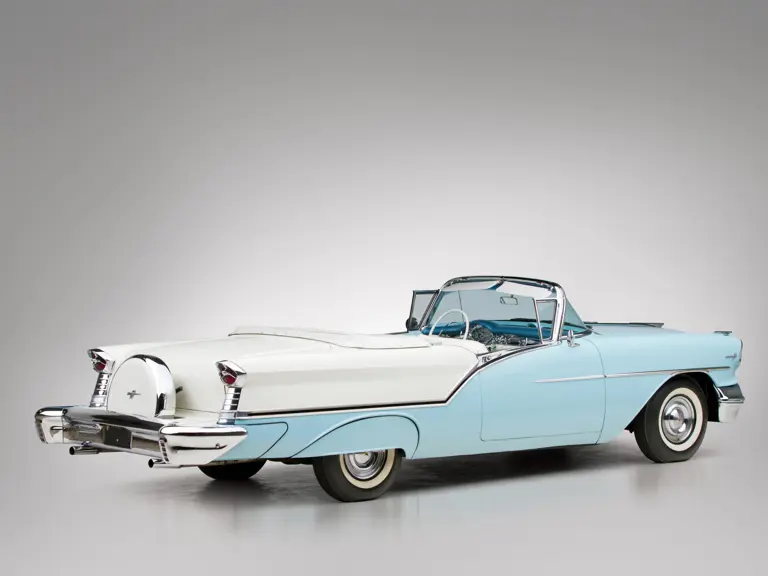
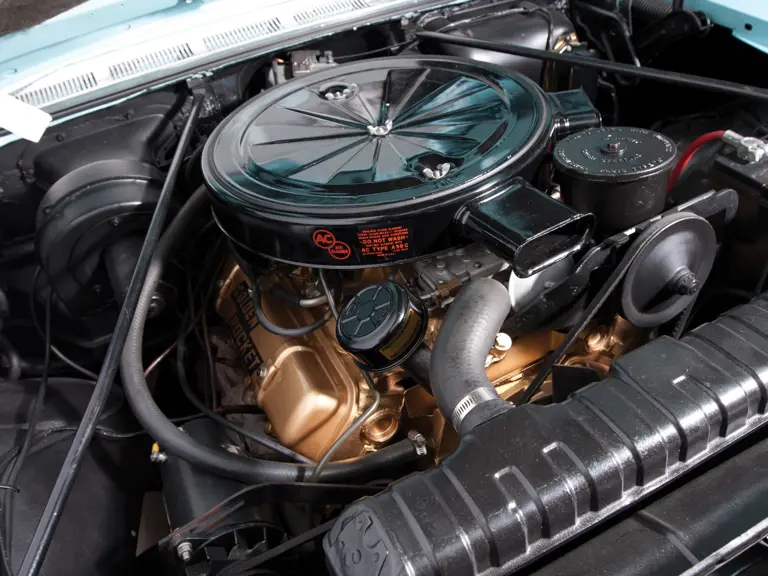
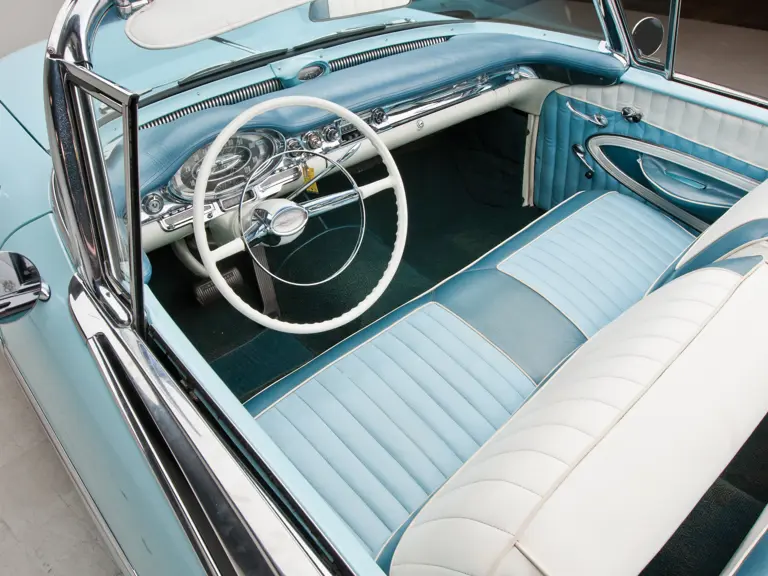
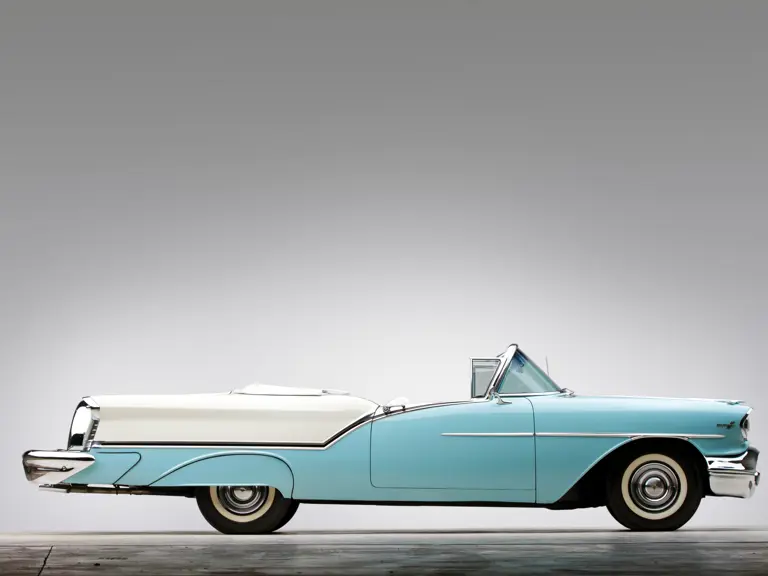
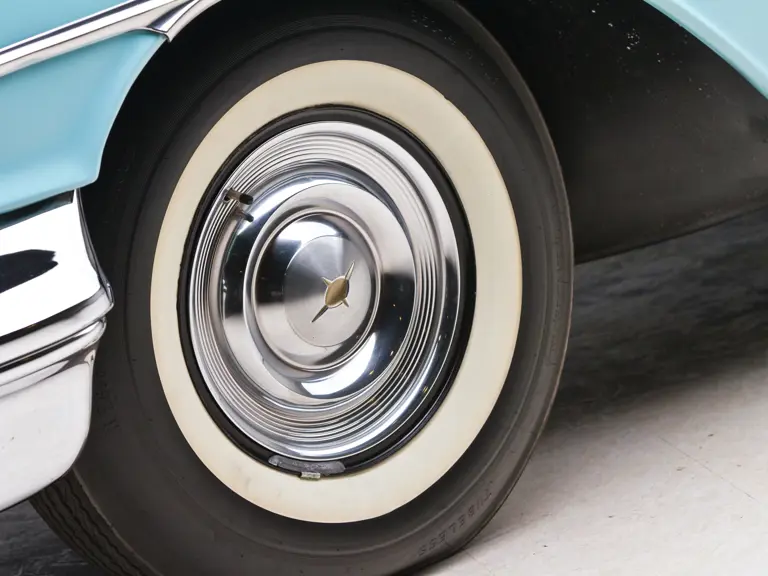
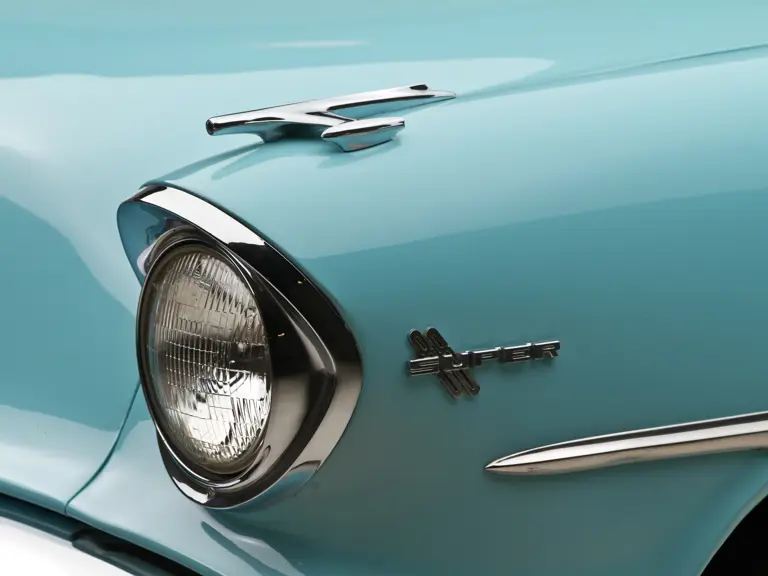


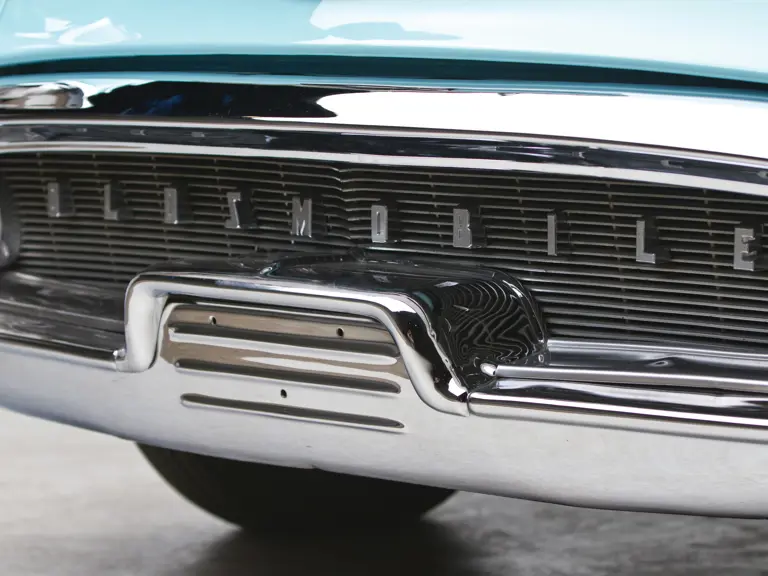
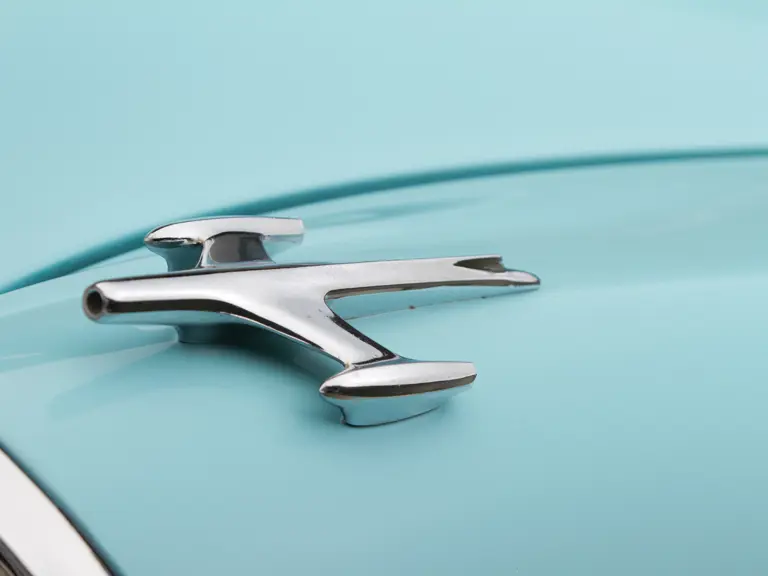
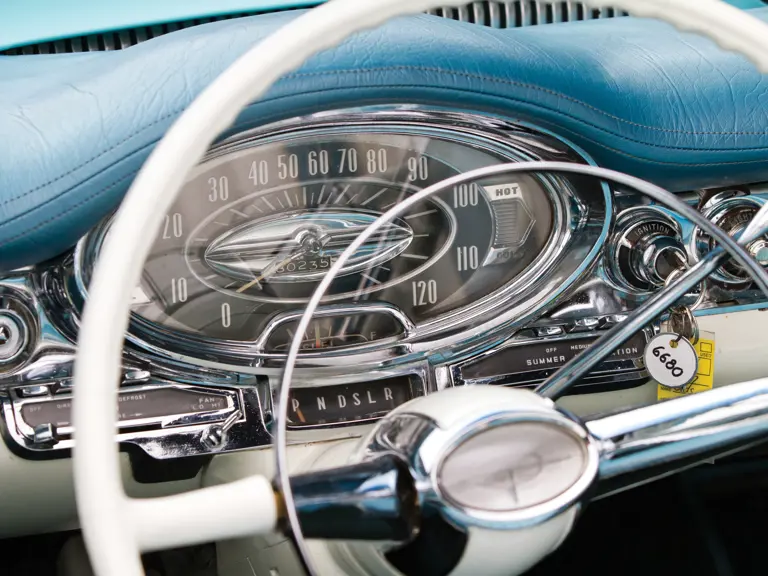

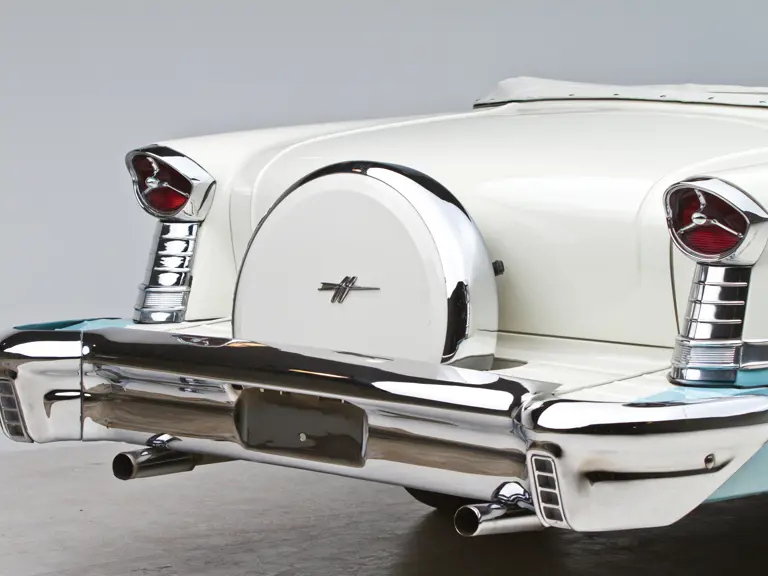
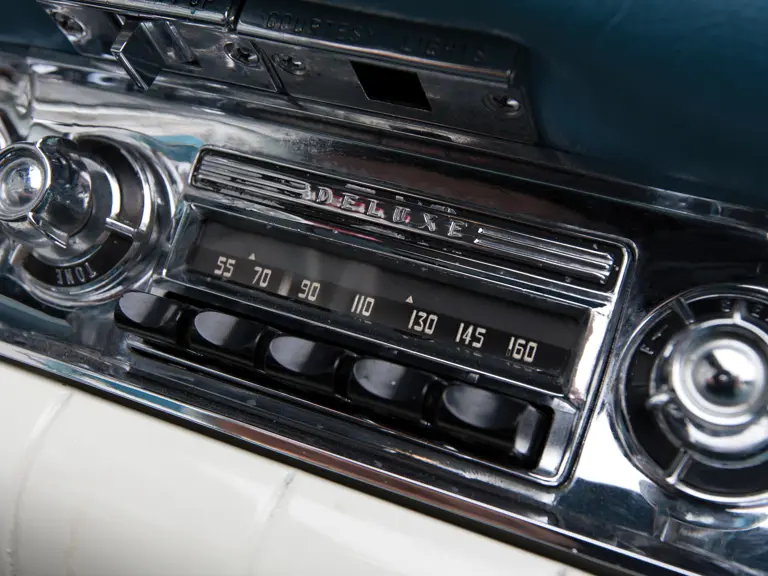
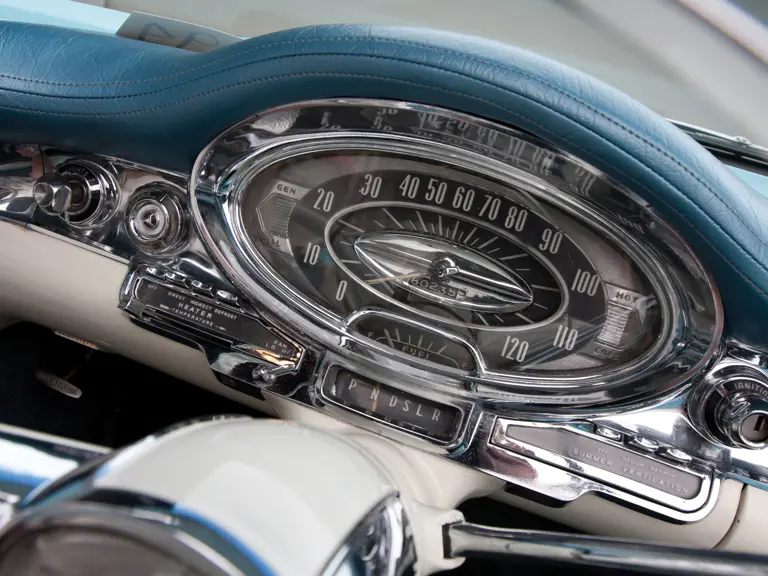
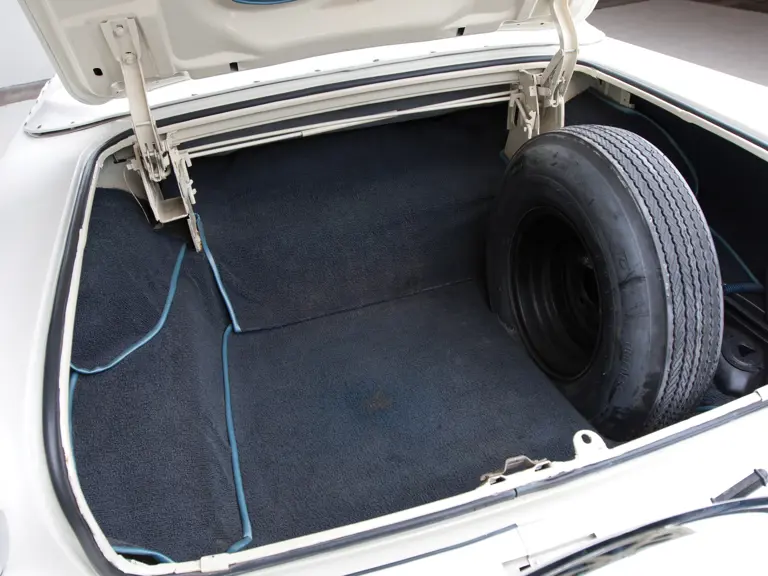
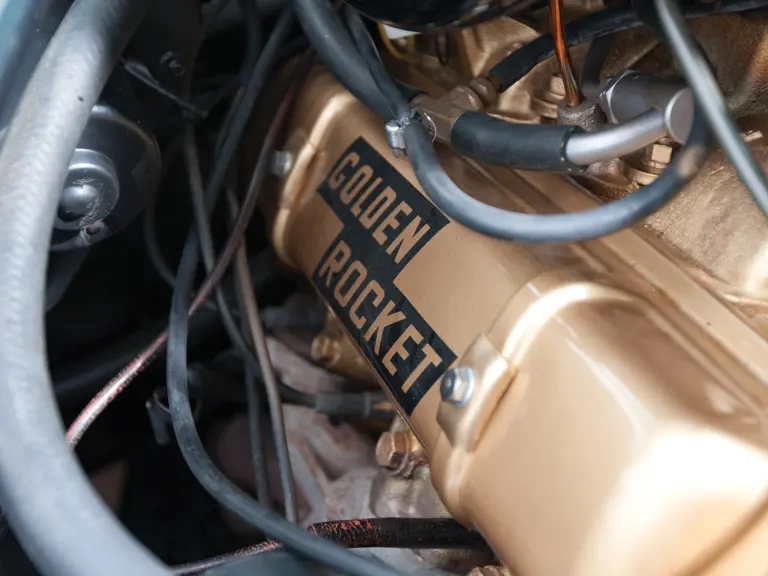
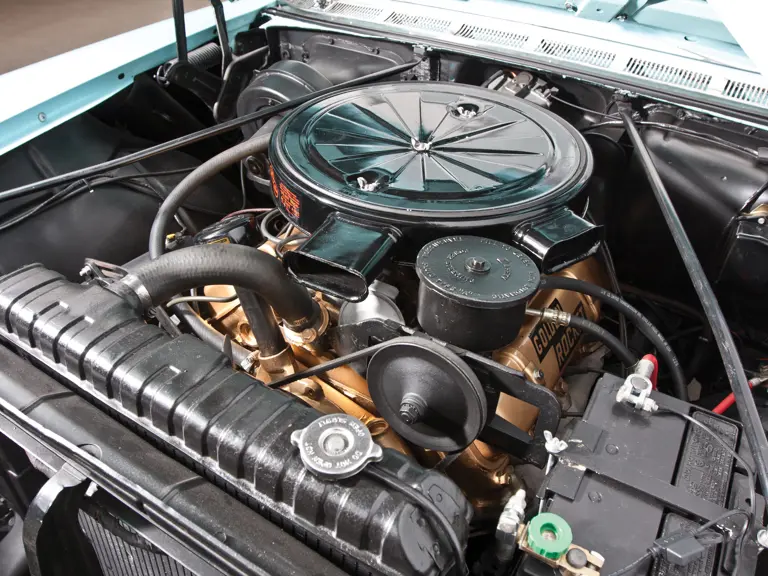
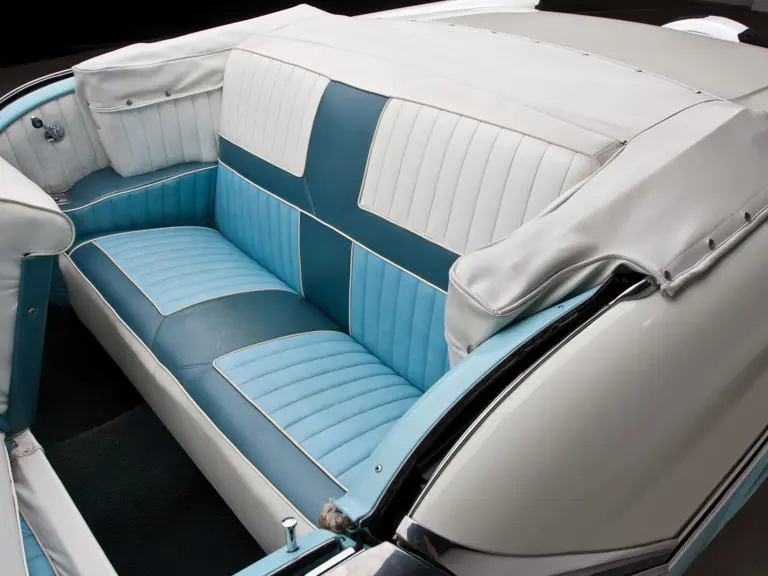

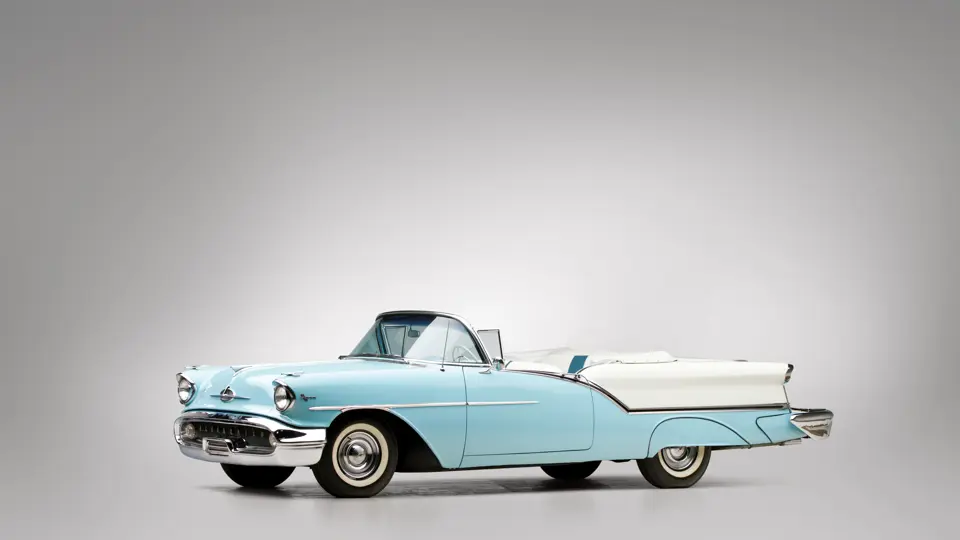
 | North Palm Beach, Florida
| North Palm Beach, Florida
